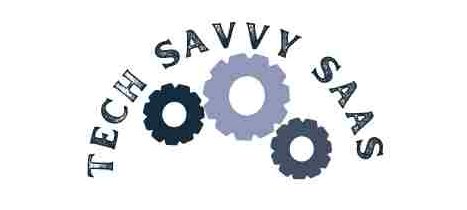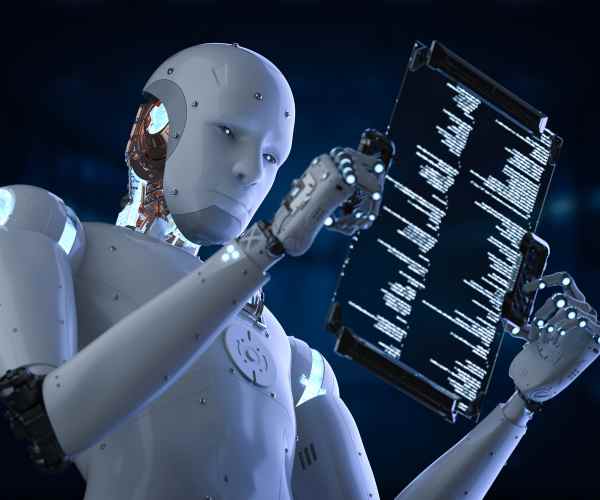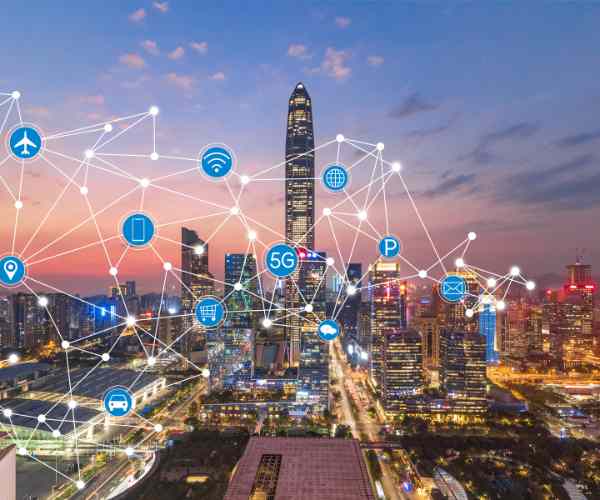The tech ecosystem is a dynamic and interconnected network of technologies, businesses, and innovations that drive the digital world. This ecosystem includes a range of components, such as tech startups, entrepreneurs, software, and data systems that collectively shape the future of technology. The growing importance of the tech ecosystem can be seen in its role as a catalyst for economic growth, innovation, and industry transformation.
Understanding technology trends is essential for entrepreneurs, startups, and established businesses. Keeping abreast of these trends allows stakeholders to make informed decisions, leverage emerging technologies, and seize new market opportunities. As the tech landscape evolves, staying updated on trends such as artificial intelligence, blockchain, and IoT can significantly impact long-term success and strategic planning.
This comprehensive guide covers current trends, emerging technologies, and their implications for the tech ecosystem. It provides valuable insights into how these trends influence the tech scene, market dynamics, and the broader technology landscape.

Current Trends in Technology
Artificial intelligence and machine learning
Artificial intelligence (AI) and machine learning (ML) are pivotal components of the tech ecosystem, driving innovation and reshaping industries.
- Artificial intelligence (AI) refers to the simulation of human intelligence in machines designed to think and learn. Machine learning (ML) is a subset of AI focused on the development of algorithms that enable machines to improve their performance through experience. Together, AI and ML play crucial roles in automating tasks, optimizing processes, and providing data-driven insights.
- AI and ML Applications:
- Custom Integrations: Tech startups and businesses leverage AI and ML to develop custom integrations that enhance operational efficiency. For example, customer relationship management (CRM) systems use AI to offer personalized interactions and predictive analytics.
- Data Analytics: AI and ML technologies are instrumental in analyzing vast amounts of data. Companies like Amazon utilize AI-driven data analytics to understand consumer behavior, optimize inventory, and personalize recommendations.
- Real-Life Success Stories:
- Google: Google’s use of AI in its search algorithms and advertising platforms showcases the impact of AI on enhancing user experiences and driving revenue growth. The company’s Google AI research has led to advancements in natural language processing, computer vision, and more.
- Amazon: Amazon employs AI and ML in its recommendation engine, which contributes to approximately 35% of its revenue. The company’s use of AI extends to warehouse automation, where ML algorithms optimize inventory management and logistics.
Research and Data Points:
- According to a McKinsey report, companies that adopted AI saw an average of 10-15% increase in productivity and a 20-30% reduction in operational costs.
- Gartner predicts that by 2025, 75% of organizations will have implemented AI in some form, significantly impacting their business operations and decision-making processes.
Blockchain and Cryptocurrencies
Blockchain Technology: Blockchain is a distributed ledger technology that ensures data integrity through a decentralized network of computers. This technology records transactions in a chain of blocks, each cryptographically linked to the previous one, which prevents tampering and enhances security.
- Significance in the Tech Industry:
- Transparency and Security: Blockchain enhances transparency and security in digital transactions by eliminating the need for intermediaries and providing a verifiable record of all transactions.
- Decentralization: Unlike traditional databases, blockchain operates on a decentralized network, which reduces the risk of single points of failure and increases system resilience.
Popular Cryptocurrencies:
- Bitcoin: As the first and most well-known cryptocurrency, Bitcoin has influenced the development of blockchain technology and established a foundation for future digital currencies.
- Ethereum: Known for its smart contracts, Ethereum extends the blockchain concept by enabling programmable transactions. Smart contracts automate and enforce agreements without intermediaries, offering new possibilities for decentralized applications (dApps) and financial services.
Economic Impact and Startup Ecosystems:
- Economic Growth: Cryptocurrencies have created new investment opportunities and disrupted traditional financial systems. The rise of digital assets has led to the creation of new markets and investment opportunities, contributing to economic growth.
- Startup Ecosystems: The cryptocurrency market has fostered a vibrant startup ecosystem focused on blockchain solutions, such as decentralized finance (DeFi) and tokenization of assets. These innovations drive economic activity and attract investment to emerging tech hubs.
Real-Life Examples:
- Ethereum: Ethereum’s introduction of smart contracts has revolutionized industries such as finance and real estate by automating complex transactions and reducing costs. For instance, DeFi platforms built on Ethereum offer decentralized lending and borrowing services without traditional banks.
- Supply Chain Management: Companies like IBM and Walmart use blockchain to enhance supply chain transparency. Blockchain ensures that every step in the supply chain is recorded and verified, which improves efficiency and traceability.
Research and Data Points:
- According to Statista, the global blockchain market is expected to grow from $7 billion in 2022 to $16 billion by 2025, reflecting increased adoption and innovation.
- Deloitte reports that 40% of surveyed executives have already incorporated blockchain technology into their operations or plan to do so within the next year.
Internet of Things (IoT)
Internet of Things (IoT): IoT refers to the network of interconnected devices that communicate and exchange data with each other via the internet. These devices include smart sensors, wearables, and connected appliances.
- Influence on the Tech Landscape:
- Connectivity and Automation: The IoT enables seamless connectivity between devices, leading to greater automation and efficiency in various applications. The technology supports the development of smart cities, home automation, and industrial IoT.
Examples of IoT implementations:
- Smart Homes: IoT devices like smart thermostats, security systems, and voice assistants (e.g., Amazon Echo) offer convenience and energy efficiency. Smart thermostats like Nest adjust temperatures based on user behavior, reducing energy consumption and costs.
- Wearable Technology: Fitness trackers and smartwatches (e.g., Fitbit, Apple Watch) monitor health metrics and provide insights into physical activity, sleep patterns, and overall well-being.
- Connected Appliances: Smart refrigerators and washing machines offer features such as remote control, automated settings, and integration with other smart home devices.
Case Studies:
- Smart Cities: Cities like Barcelona and Singapore use IoT to improve urban living. Barcelona’s smart street lighting system reduces energy consumption by adjusting lighting based on real-time data from sensors.
- Healthcare: Remote patient monitoring systems leverage IoT devices to track vital signs and health metrics, improving patient care and reducing hospital visits. Fitbit Health Solutions provides real-time health data that supports proactive health management.
Research and Data Points:
- According to a Gartner report, the number of connected IoT devices is projected to reach 30 billion by 2025, highlighting the rapid growth and expansion of IoT applications.
- McKinsey estimates that IoT could generate up to $11.1 trillion in economic value by 2025, driven by efficiencies and innovations across various sectors.
5G Technology
What is 5G technology? 5G is the fifth generation of mobile network technology, designed to significantly enhance wireless communication capabilities. Unlike its predecessors, 5G offers higher data transfer rates, reduced latency, and increased connectivity, making it a game-changer in the tech scene.
- Impact on the Tech Scene:
- Enhanced Connectivity: 5G supports a massive increase in the number of connected devices, enabling seamless communication in smart cities, industrial IoT, and smart homes.
- Technological Advancements: The deployment of 5G technology accelerates the development of advanced applications and innovative solutions across various sectors, including healthcare, transportation, and entertainment.
Benefits of 5G:
- Faster Speeds: 5G offers download speeds of up to 10 Gbps, which is approximately 100 times faster than 4G LTE. This speed boost enables high-definition streaming, real-time data processing, and enhanced user experiences.
- Lower Latency: The technology reduces latency to around 1 millisecond, compared to 30–50 milliseconds with 4G. This improvement is crucial for applications requiring real-time responsiveness, such as autonomous vehicles and remote surgery.
Examples of 5G utilization:
- Smart Cities: In Shanghai, 5G is used to manage traffic congestion through connected traffic lights and real-time monitoring of traffic flow. This integration improves overall urban efficiency and reduces commute times.
- Enhanced Mobile Experiences: South Korea has implemented 5G networks to support augmented reality (AR) and virtual reality (VR) applications in gaming and entertainment. Users experience immersive environments and interactive content with minimal lag.
Research and Data Points:
- According to a Qualcomm report, 5G technology is expected to generate $13.1 trillion in global economic output by 2035, driven by its applications in various industries.
- Ericsson projects that there will be over 3.5 billion 5G subscriptions worldwide by 2026, highlighting the technology’s rapid adoption and growth.
Emerging Technologies
Augmented reality (AR) and virtual reality (VR)
What are AR and VR? Augmented reality (AR) overlays digital information onto the real world, enhancing users’ perception of their environment. Virtual reality (VR) immerses users in a completely virtual environment, creating an experience separate from the physical world.
- Potential within the tech ecosystem:
- AR and VR technologies offer transformative possibilities in gaming, education, and training by providing immersive experiences and interactive learning environments.
Examples of AR and VR applications:
- Gaming: Pokémon GO, an AR game, blends the digital and real worlds, encouraging players to explore their surroundings while interacting with virtual characters.
- Education: Google Expeditions uses VR to take students on virtual field trips, allowing them to explore historical landmarks and scientific concepts without leaving the classroom.
- Training: Medical simulation programs use VR to train healthcare professionals in surgical procedures and emergency response, providing realistic practice scenarios.
Case Studies:
- Industrial Training: Walmart uses VR for employee training, creating realistic simulations of store environments to help new hires practice customer service and operational procedures.
- Medical Field: Osso VR offers a platform for orthopedic surgeons to practice complex procedures in a virtual environment, improving their skills and reducing surgical errors.
Research and Data Points:
- Statista estimates that the global AR and VR market will reach $296 billion by 2024, driven by advancements in technology and increasing adoption across various sectors.
- A Deloitte report highlights that 56% of companies using VR for training have reported increased employee performance and engagement, underscoring the technology’s effectiveness in professional development.
Quantum Computing
What is quantum computing? Quantum computing leverages the principles of quantum mechanics to perform computations that classical computers cannot handle efficiently. Quantum computers use quantum bits (qubits), which can represent multiple states simultaneously, allowing for complex problem-solving and data analysis.
- Potential to Revolutionize the Tech Industry:
- Cryptography: Quantum computing has the potential to break traditional cryptographic algorithms, leading to the development of new quantum-resistant encryption methods to safeguard data.
- Complex Problem-Solving: Quantum computers can solve complex problems in optimization, material science, and drug discovery much faster than classical computers, offering breakthroughs in various fields.
Real-Life Advancements and Research:
- Google’s Quantum Supremacy experiment demonstrated that its quantum processor, Sycamore, solved a problem faster than the most advanced classical supercomputers, marking a significant milestone in quantum computing.
- IBM’s Quantum Hummingbird processor aims to achieve 1,121 qubits, moving closer to practical quantum computing applications. The company provides a Quantum Experience platform for researchers to develop and test quantum algorithms.
Research and Data Points:
- A McKinsey report suggests that quantum computing could potentially add $1 trillion to the global economy by 2035, driven by its impact on various industries and research fields.
- According to GartnerBy 2025, quantum computing will achieve significant milestones, including the development of quantum algorithms and practical applications, signaling a shift in the computing landscape.
Biotechnology
What is biotechnology and its integration with technology? Biotechnology is a field that combines biological sciences with technology to develop innovative solutions in health, agriculture, and environmental management. It leverages biological systems and organisms to create products and processes that improve human life.
- Integration with Technology:
- Advancements in biotechnology often involve the use of cutting-edge technologies, such as artificial intelligence (AI) and machine learning (ML), to analyze biological data and accelerate research.
- Biotech Tools: Technologies like CRISPR and bioinformatics are integrated into biotechnology to enhance genetic research, drug development, and personalized medicine.
Examples of Biotech Innovations:
- Gene Editing: CRISPR-Cas9 is a revolutionary gene-editing technology that allows precise modifications to DNA. It has applications for treating genetic disorders like sickle cell anemia and cystic fibrosis.
- Personalized Medicine: This approach tailors medical treatments to individual genetic profiles. For instance, pharmacogenomics helps predict patient responses to drugs, optimize therapy, and reduce adverse effects.
Case Studies:
- Moderna: The biotechnology company Moderna utilized mRNA technology to develop its COVID-19 vaccine. This innovation demonstrated how biotechnology can rapidly respond to global health crises and paved the way for new vaccine platforms.
- Illumina: Illumina is a leader in genomic sequencing technologies. Its advancements in DNA sequencing have enabled more detailed genetic research and personalized treatment options, impacting the tech ecosystem by pushing the boundaries of genomic data applications.
Research and Data Points:
- According to MarketsandMarkets, the global biotechnology market is projected to reach $775.2 billion by 2024, driven by advances in gene therapy, biopharmaceuticals, and biotechnology tools.
- A Harvard Business Review study found that biotechnology firms are increasing their R&D investments, with biotech R&D spending expected to grow at an annual rate of 7.4% through 2025.
The Impact of Technology on Society
Economic Impact
How Are Technology Trends Influencing Economic Growth and the Job Market? Technology trends are significantly shaping economic growth and the job market by driving innovation, productivity, and industry transformation.
- Influence on Economic Growth:
- Productivity Gains: Technologies like automation, AI, and cloud computing enhance productivity across industries, leading to economic growth. For example, AI can automate repetitive tasks, freeing up human resources for more complex activities.
- Tech Startups: Startups in the tech ecosystem are contributing to economic development by introducing innovative solutions and creating new markets. The rise of fintech startups, for instance, has transformed financial services and increased access to capital.
Examples of shifts in the business landscape:
- E-commerce Growth: Amazon and Alibaba have revolutionized retail by leveraging e-commerce technologies. Their platforms facilitate global trade, drive consumer spending, and create millions of jobs worldwide.
- Gig Economy: Platforms like Uber and Airbnb have introduced gig-based models, offering flexible employment opportunities and impacting traditional job markets.
Research and Data Points:
- A McKinsey report estimates that digital transformation could contribute up to $1.8 trillion to the global economy by 2025 through increased efficiency and innovation.
- Statista projects that the global tech startup ecosystem will generate $4.5 trillion in annual revenue by 2025, highlighting the sector’s substantial economic impact.
Social Impact
How is technology affecting social interactions and daily life? Technology is reshaping social interactions and daily life by altering communication methods, personal relationships, and access to information.
- Effects on Social Interactions:
- Social Media Influence: Platforms like Facebook, Twitter, and Instagram have transformed how people connect and share information. They influence public opinion, marketing strategies, and social movements.
- Digital Communication: Technologies such as video conferencing and instant messaging have made remote work and virtual social interactions more accessible, changing the dynamics of personal and professional communication.
Examples of Changes Driven by Tech Innovations:
- Social Media: Instagram has become a key platform for influencers and brands, driving marketing strategies and shaping consumer behavior. The rise of TikTok has introduced new forms of digital entertainment and social engagement.
- Remote Work: The COVID-19 pandemic accelerated the adoption of remote work technologies. Tools like Zoom and Slack have facilitated virtual collaboration and redefined workplace norms.
Research and Data Points:
- A Pew Research Center survey found that 72% of Americans use social media to stay connected with friends and family, highlighting technology’s role in modern social interactions.
- GlobalWebIndex reports that the average person spends 2 hours and 31 minutes per day on social media, indicating its significant impact on daily life and communication habits.
Ethical Considerations
What are the ethical issues related to emerging technologies? Emerging technologies raise several ethical concerns related to privacy, AI ethics, and societal impacts. Addressing these issues is crucial for responsible technological development and deployment.
- Privacy Concerns:
- Data Security: The collection and use of personal data by tech companies raises privacy issues. Ensuring data protection and transparency is essential to maintaining user trust.
- Surveillance: Technologies like facial recognition and big data analytics can be used for surveillance, potentially infringing on individual privacy rights.
- AI Ethics:
- Bias and Fairness: AI algorithms can perpetuate biases present in training data, leading to unfair treatment in areas like hiring and law enforcement. Ensuring ethical AI development involves addressing these biases and promoting fairness.
- Autonomous Systems: The use of autonomous systems in areas like the military and transportation raises ethical questions about decision-making and accountability.
Ongoing Debates and Solutions:
- Ethical AI Guidelines: Organizations like OpenAI and The Partnership on AI are developing guidelines for ethical AI use, focusing on transparency, fairness, and accountability.
- Data Privacy Regulations: Laws such as the General Data Protection Regulation (GDPR) and the California Consumer Privacy Act (CCPA) aim to protect user data and enhance privacy rights.
Research and Data Points:
- A Gartner report highlights that 75% of AI projects will require ethical guidelines by 2024 to address bias and transparency issues.
- Forrester Research indicates that 80% of organizations will implement data privacy measures to comply with global regulations, reflecting the growing importance of ethical considerations in technology.
FAQs
What is the tech ecosystem, and why is it important?
The tech ecosystem refers to the interconnected network of technology companies, startups, research institutions, investors, and other stakeholders that contribute to technological innovation and development. It includes various sectors such as software, hardware, telecommunications, and biotechnology.
- Importance: The tech ecosystem is crucial because it fosters innovation, drives economic growth, and enhances quality of life. It creates a collaborative environment where new ideas and technologies can thrive, leading to advancements that benefit businesses and individuals alike. For instance, the rise of Silicon Valley exemplifies how a robust tech ecosystem can lead to the development of groundbreaking technologies and influential companies.
How do emerging technologies impact daily life and businesses?
Emerging technologies significantly impact both daily life and businesses by introducing new ways to solve problems, improve efficiency, and enhance user experiences.
- Daily Life: Technologies like smartphones, smart homes, and wearable devices have transformed how people communicate, manage their homes, and monitor their health. For example, smart thermostats like those from Nest help optimize energy usage and provide convenience.
- Businesses: Companies leverage technologies such as cloud computing, AI, and big data to streamline operations, gain insights, and stay competitive. For instance, Amazon Web Services (AWS) provides scalable cloud solutions that enable businesses to operate more efficiently and flexibly.
What are the key trends to watch in the tech industry?
Key trends to watch in the tech industry include:
- Artificial Intelligence (AI) and Machine Learning (ML): Continued advancements in AI and ML are transforming various sectors, from healthcare to finance. Companies like Google and Microsoft are investing heavily in these technologies to drive innovation.
- 5G Technology: The rollout of 5G networks is set to revolutionize mobile connectivity, offering faster speeds and lower latency, which will enable new applications and services.
- Blockchain and Cryptocurrencies: Innovations in blockchain technology and the rise of cryptocurrencies are reshaping financial systems and business processes. Ethereum and Bitcoin are leading examples of how blockchain is being utilized.
- The Internet of Things (IoT): The proliferation of connected devices is enhancing smart homes, industrial automation, and urban infrastructure. IoT technologies are driving efficiencies and new business models.
How can businesses adapt to new tech trends for long-term success?
Businesses can adapt to new tech trends by:
- Investing in Technology: Incorporating emerging technologies such as AI, blockchain, and IoT into their operations to stay competitive. For example, using AI for customer service can enhance the user experience and operational efficiency.
- Continuous Learning: encouraging ongoing education and training for employees to keep up with technological advancements and industry changes. Tech training programs and online courses can help staff acquire new skills.
- Agile Development: Adopting agile methodologies to quickly respond to technological changes and market demands. This approach allows businesses to remain flexible and innovative.
What are the ethical concerns associated with new technologies?
Ethical concerns related to new technologies include:
- Privacy: The collection and use of personal data by technology companies raises privacy issues. Ensuring data protection and implementing robust privacy policies are crucial for maintaining user trust.
- Bias and Fairness: AI and ML systems can perpetuate existing biases if not carefully designed and monitored. Addressing bias in algorithms and promoting fairness are essential for ethical AI development.
- Surveillance: Technologies such as facial recognition and big data analytics can be used for surveillance, potentially infringing on individual rights. Balancing security with privacy is a key consideration.
Conclusion
The exploration of current tech trends and emerging technologies underscores their profound impact on both the tech ecosystem and broader society. Key trends such as AI, 5G, and blockchain are reshaping industries, driving innovation, and offering new opportunities for businesses. Staying informed about these trends is vital for making informed decisions and maintaining a competitive edge.
For continued updates on technology trends and insights, consider following industry news, subscribing to newsletters, and engaging with tech communities.
More Post





